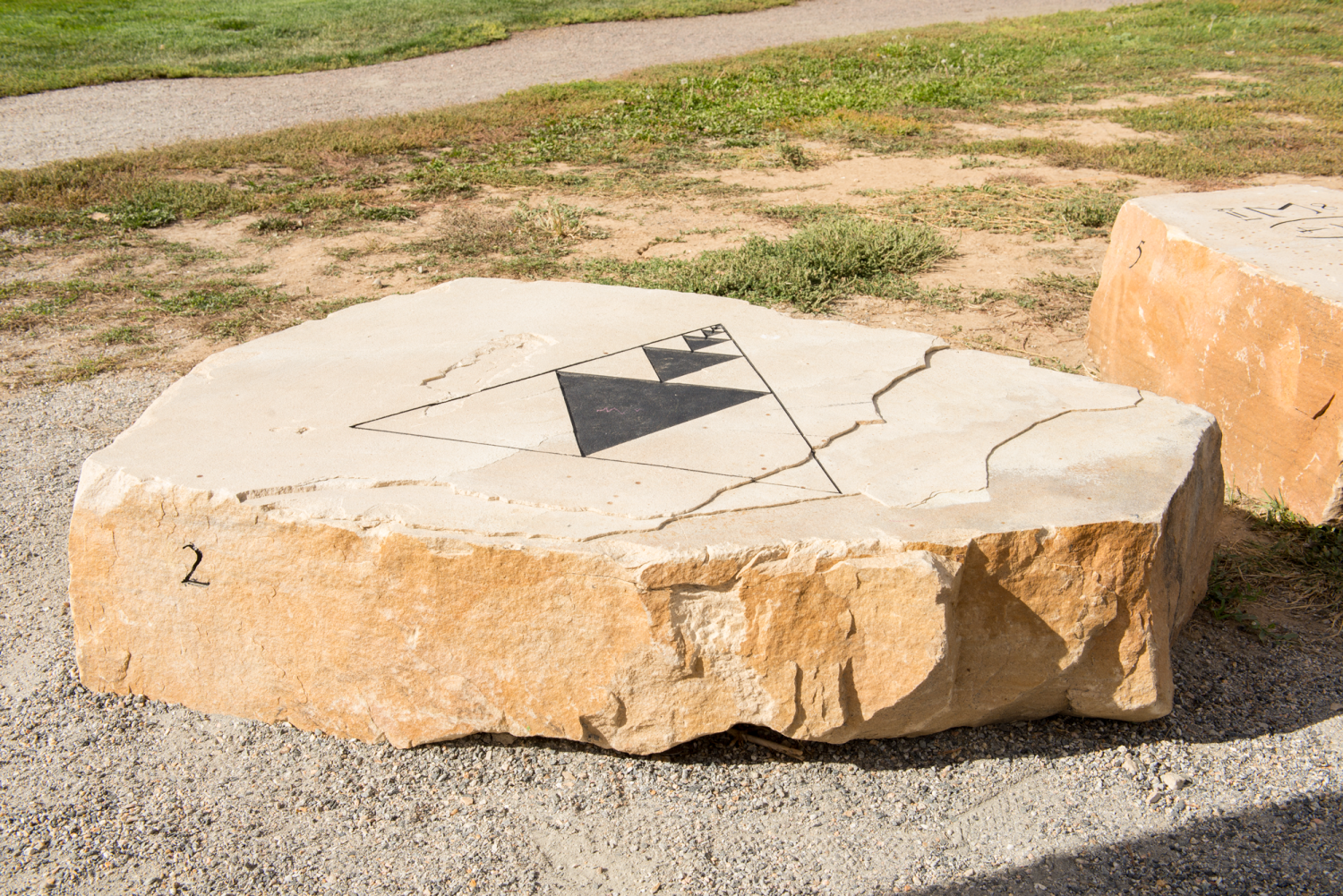Infinite Triangles

This is a simple story, but it takes a little while to think about.
Look at repeating black triangles (imagine they continue infinitely).
The area of the ALL black triangles takes up 1/3 the area of the large triangle - see this by noticing that on either side of each black triangle are TWO plain triangles.
By imagining an inifinty of triangles within one big triangle, we can get an idea about how to add up infinitely many things (without taking calculus).
To be more specific (only if you want):
The interesting thing is the that the area if the largest black triangle itself is 1/4 of the large triangle.
And the next smaller one is 1/4 of 1/4.
And then 1/4 of a 1/4 of a 1/4.
and so on.
And so the other rock says, in math language, when you add up the area of all these smaller and smaller triangles, you get exactly 1/3.
The idea that we can add up infinitly many things is essential to Calculus, but if you like the idea, you can also explore this idea in the work of M.C. Escher.
How Escher got his ideas for Circle Limit

